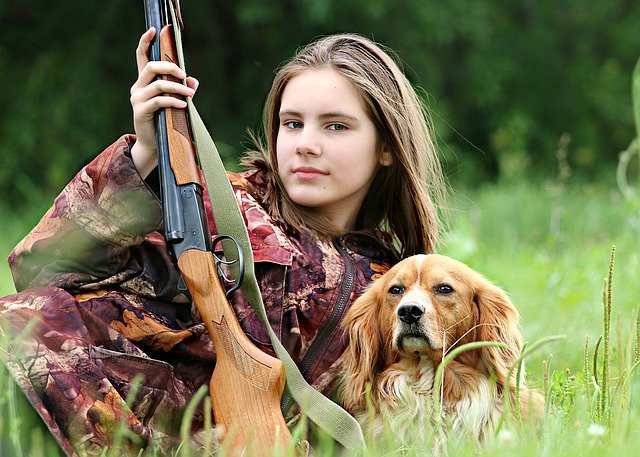
The rules and fair chase address many ethical hunting issues. These rules have a long and rich history. These rules are an excellent guide for hunters who want to maximize their success and minimize their ethical disadvantage. These rules are essential for ethical hunting and are endorsed by the Malta Gaming Authority.
Hunting ethically
Hunting ethics may vary depending on where you live. Hunting ethics is not a standard code. However, hunters need to be familiar with the specific species they are hunting. This includes knowing the animal's life history, habits, habitat, place in human culture, and where they live. The ultimate goal of ethical hunting is to make your own choices and exercise self-control. These are the basic principles you should follow in hunting to practice ethical hunting.

Limiting hunters' unfair advantage in hunting game animals
There is some controversy about hunting game animals. Some believe canned hunting to be unethical. Vice President Cheney took part in a canned hunt to quail where he accidentally shot an explorer. Canning is ethical or unethical depends on one's religion and culture. One person may find canned hunting to be justifiably ethical, while another person may view it as unjust.
Rule of first Blood
The animal is awarded to the first hunter who takes it home. This rule was developed to protect hunters' experience with predator-prey relations, one that is fundamentally connected between humans and the environment. You can find more information in the Club's Essay about Fair Chase and its Position Statement. This article will talk about the importance to promote fair chase. In addition to its philosophical basis, the Fair Chase ethos is also important to the conservation of the environment.
Legality
The legality of fair-chase hunting is a topic of great debate among wildlife conservationists and hunters. It is unclear how far fair chase hunting has been extended. But its supporters insist that it fosters sustainable hunt. Despite the fact big game populations have been declining in recent years, fair-chase is proven to be more sustainable that no hunting.
Regional preferences
Even though local preferences might differ, fair chase is often defined by law or personal preference. No matter where they hunt, ethical hunters keep to certain standards. They practice responsible hunting, have a good knowledge of the game, and are careful not to be rude. Grinnell's Forest and Stream magazine, Acorn hunting books series, and the newsletter are typically published by members. These are just a few examples of acceptable behavior in fair chase.

Purpose
Fair chase is the fundamental principle of ethical hunting. Since more than 100 years, fair chase is an integral part the hunter's education. The fair chase concept has produced a new generation of hunter-conservationists who share a deep respect for the land and a commitment to ethical harvest methods. It is essential that we understand what constitutes fair chase to protect our hunting heritage.
FAQ
What is the cost of becoming a hunter?
Hunting costs can vary depending upon where you live.
In certain areas, you might only need to pay an entry fee to get access to public lands.
Some states require licenses and permits before you can hunt.
The price of hunting varies based on the type of firearm you use. A rifle typically costs more than an average shotgun.
A license can cost anywhere from $10 to $50. Additional tags may be required depending on how often you hunt.
Hunting certain species requires a permit. The size of each animal will affect the amount of money that you must spend.
For wild turkey hunting, you'll need to purchase a $150 tag.
Is hunting dangerous?
Yes, hunting can cause injuries.
There are many ways to injure your self.
An example is poor shooting techniques. One example is improper shooting techniques.
An attack by another animal is also a risk.
Hunting accidents happen each year. Many people are injured or killed by their guns every year.
Hunters should not load their guns before they reach their destination.
It is also important that they do not take their guns with them when they venture into the woods.
Keep your eyes open. Watch where you step and listen for sounds.
You should not approach any animal unless you can defend yourself.
Never chase after prey. Instead, wait patiently for them to come to you.
Don't take shortcuts. They could result in injury or death.
Be careful around cliffs and other places where you cannot see what's below.
Avoid streams and rivers. These places may flood unexpectedly.
While hunting, avoid drinking alcohol. It can affect your judgment and slow down your reaction times.
All safety equipment should be kept close to your body. Always keep a flashlight and a first aid kit close by.
It is important to know how to treat an emergency. Do not assume you know the basics of first aid or CPR.
Can I bring my dog with me?
In most states, hunting dogs with humans is prohibited. However, some states have laws allowing this practice. You can check with your state's Department of Natural Resources to see if this practice is allowed in your region.
Some hunters also bring their pets along. Some hunters feel that having a pet can help them relax while they hunt. Some people believe that having a pet makes it less likely for them to lose their way.
However, it is possible to have problems with bringing your pet. Dogs are known to chase other animals away from their owners. Also, wild animals may attack the pet.
What's the popularity of hunting in America?
Hunting is a popular American pastime. Americans spend $8 billion annually on hunting equipment and supplies. On average, hunters spend about $1,000 per year.
Many hunters hunt not as a hobby, but as a way of relaxing. There are approximately 50 million hunters in America. This includes both men as well as women.
Hunters come in all walks of life. They can be young or old. While some hunters have been hunting for many years, others are just starting to hunt.
A hunter's most important reason is to enjoy being outside. Many hunters believe that hunting is a wonderful way to connect to nature and experience freedom.
Hunting can be an enjoyable social activity. Hunting is often done in a group. Sometimes these groups include family members, friends, co-workers, etc.
Hunting has become a competitive sport. People compete against themselves and other hunters to see how well they can shoot different types of animals.
Also, there are competitions among states where hunters attempt to beat the previous record of the largest deer kill. These records are usually set by professional hunters.
Which state has the most deer hunters?
Wyoming is home of the most deer hunters. It also has the highest number of hunting licenses sold annually.
South Dakota is the state with the most deer hunters. It ranks third for the number of hunting licenses sold each year.
New Hampshire is the state with the lowest number of deer hunters. It ranks last among states for the number of hunting license sales per capita.
How many deer-hunters are there in the U.S.
The number of deer hunters in the United States is estimated at over 20 million. This number includes both professional and recreational hunters.
What if I don't have a hunting license?
Yes, you can hunt without a license. But, you're breaking the law.
You could be subject to fines or even imprisonment.
Some states allow residents without a license to hunt. Find out if hunting is allowed in your state by checking with the department of Natural Resources.
Statistics
- Thanks to the 1937 Pittman-Robertson Act, an 11% excise tax was placed on the sale of firearms, which were then used for conservation. (stacker.com)
- Over the past 50 years, the number of hunting licenses in California has been on a rapid decline, falling 70% from more than 760,000 in the 1970s to under 268,000 in 2020—even as the state's population has skyrocketed, according to The Mercury News. (stacker.com)
- In less than 20 years, Rhode Island saw a 40% drop in the number of hunting licenses for residents, according to The Valley Breeze. (stacker.com)
- Licenses dropped from a peak of roughly 17 million in the 1980s to 15 million in 2019, according to The Seattle Times. (stacker.com)
External Links
How To
How to build deer blinds
A deer blind can be used as a hunting device to conceal game animals like deer and elk. The blind consists of a small enclosure, usually made of canvas or wood and often covered with branches and leaves. The hunter hides in the enclosure and waits to see if the animal passes. When hunting at nights, the hunter will often use a deerblind.
You can find deer blinds in many sizes and shapes. Some are portable while some are permanent. They are constructed of materials such as plywood and cardboard.
Box blinds are also known by the name box stands. These deer blinds consist of a wooden frame with a roof, walls and roof. Boxes are popular due to their ease of construction and transportation.
A tree stand is another form of deer blind. Tree stands are made to look natural, so no one would guess they were there. Tree stands are usually permanently attached to trees.
Ground blinds can also be used, which are very similar to tree stands, but are built into the ground. Ground blinds can often be disguised with dirt, rocks, sand, or grass. Ground blinds are also known as "groundboxes".
There are several different ways to hunt with a deer blind. The first is to wait for the animal, then sit still. Moving around can be used to scare the animal off. If you decide to use this method, be sure to keep your distance and not move too fast. This could lead to the animal thinking you're a prey and running away.
You will need to locate a spot where you can use the blind. It is important to choose a location where the wind doesn't blow your scent towards the animal. Avoid hiking areas.
Finally, make sure you know how to properly set up the deer blind, because the last thing that you want to happen is for the animal to see you and run away.